LGBT Pride Flag Guide: Lesbian, Bisexual, Transgender, Non-Binary and Others
With Pride celebrations kicking off in June in the U.S. and other countries, we took a look at some LGBTQ Pride flags and the meanings behind them.
Rainbow flag




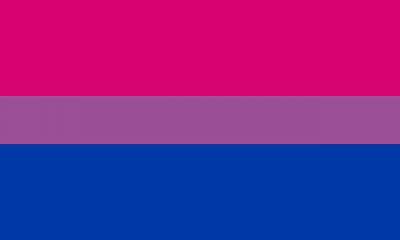

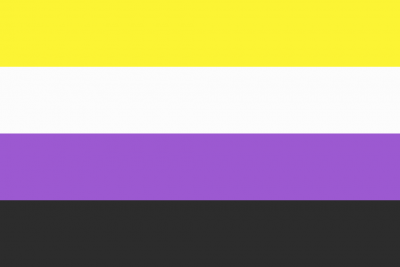




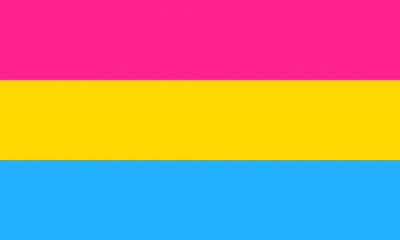

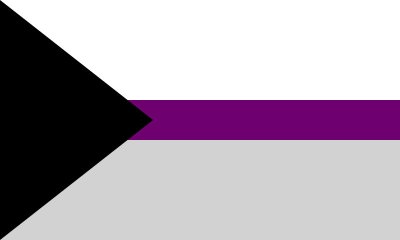
The rainbow flag, seen first in the gallery above, was designed by Gilbert Baker for the 1978 San Francisco's Gay Freedom Celebration. "In the original eight-color version, pink stood for sexuality, red for life, orange for healing, yellow for the sun, green for nature, turquoise for art, indigo for harmony and violet for the soul," the website of Amherst College in Massachusetts explains.
The flag was modified in 1979 by the organizers of the 1979 San Francisco Pride parade, who wanted to "split the flag into two in order to decorate the two sides of the parade route," according to Virginia's Old Dominion University website.
"To achieve this, they needed an even number of stripes, so the turquoise stripe was dropped, which resulted in a six stripe version of the flag we know today — red, orange, yellow, green, blue, and violet," the website adds.
Lesbian flag

The Old Dominion University notes: "There have been various iterations of the lesbian flag since one was first introduced in the 1990s." The latest version of the lesbian flag was created by Emily Gwen in 2018, and includes the seven stripes from a previous version (the lipstick flag).
The dark orange represents gender non-conformity and the orange denotes butch lesbians, while the light orange symbolizes community.
The white portion of the flag represents the "unique relationships to womanhood," while pink marks serenity and peace and the dark rose shade represents femininity, the University of California, Santa Barbara website says.
Transgender flag

Designed by Monica Helms, the transgender flag was first shown at a pride parade in Phoenix, Arizona in 2000. The blue stripes represent the traditional color for baby boys, while the pink symbolizes the traditional color for girls. The white center represent "those who are transitioning, who feel they have a neutral gender or no gender, and those who are intersex," the Amherst College website explains.
Bisexual flag

The bisexual flag was designed by Michael Page and first unveiled in December 1998. According to Page: "The pink color represents sexual attraction to the same sex only (gay and lesbian). The blue represents sexual attraction to the opposite sex only (straight) and the resultant overlap color purple represents sexual attraction to both sexes (bi)."
Asexual flag

The asexual flag was created by the Asexual Asexual Visibility and Education Network (AVEN) in 2010. The black stripe represents asexuality, while the grey stripe the grey area between sexual and asexual. The white symbolizes sexuality and the purple stripe represents community.
Non-binary flag

The non-binary flag was created by Kye Rowan in 2014. The yellow represents those who identify outside of the gender binary, while the white represents non-binary people with multiple genders. The purple color symbolizes a mixture of both male and female gender, while black represents "agender individuals," the University of California, Santa Barbara says.
Genderqueer flag

The genderqueer flag was launched in 2011 and created by Marilyn Roxie. It features a lavender strip at the top "as it is a mixture of blue and pink, traditional colors associated with men and women, in order to represent androgyny," the Amherst College website says.
"The lavender also represents the queer identity, as it has long been a color associated with the LGBT community. In the center is a white stripe, meant to represent a gender or gender neutral identity. Finally, there is the dark chartreuse green, as the inverse of lavender, it is used to represent third gender identities and all those who identify off the traditional gender spectrum," the website notes.
Gender fluid
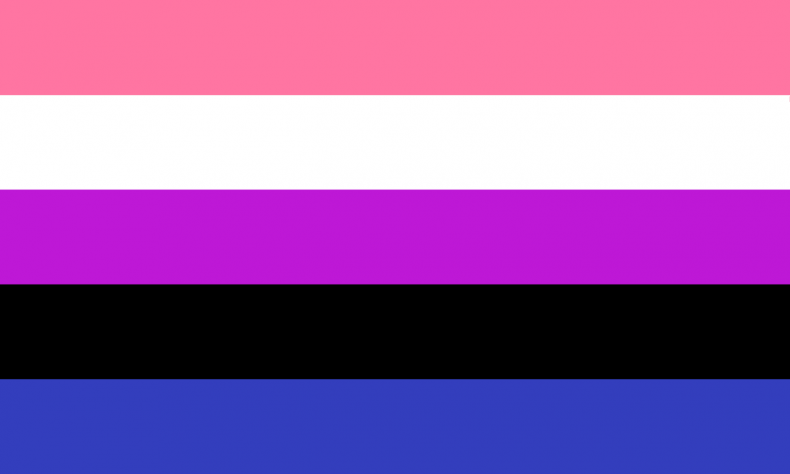
Gender fluid is a subgroup in the genderqueer community and falls within the transgender umbrella.
Its flag represents "the fluctuations and flexibility of gender in gender fluid people," the Amherst College website explains.
The pink stripe symbolizes femininity or feeling female and the blue represents masculinity or feeling male, while the white stripe represents the lack of gender. Purple denotes "a combination of masculinity and femininity including various degrees of androgyny," while the black stripe represents "all other gender, third genders, and pangender," the website says.
Pansexual flag
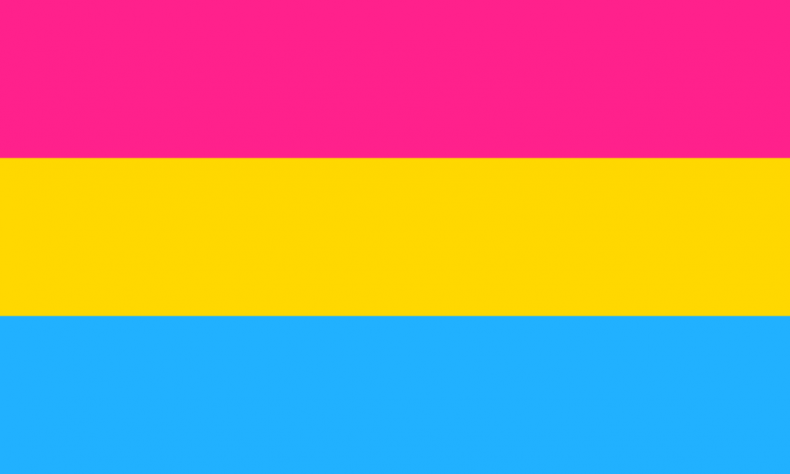
Created in 2010, the pansexual pride flag features the colors pink, yellow and blue. The pink symbolizes attraction to those who identify as female, while blue marks attraction to those who identify as male.
The yellow represents "attraction to those who idenify as genderqueer, non-binary, agender, androgynous, or anyone who doesn't idenfity on the male-female binary," the University of California, Santa Barbara says.
Polysexual flag

Launched in 2012, the polysexual flag features three colors, with pink representing attraction to those who identify as female, blue representing attraction to those who identify as male. The green symbolizes attraction to non-binary people, such as a gender bigender or gender fluid person, the Amherst College website says.
The Old Dominion University website says: "Polysexual (sometimes spelled Polisexual or Plysexual) is a sexuality defined by the attraction to many genders, but not necessarily all. A polysexual person may, for example, be attracted to all genders except for men. Polysexuality should not be confused with polyamory, the capacity to be in a relationship with multiple people at once."
Polyamorous flag
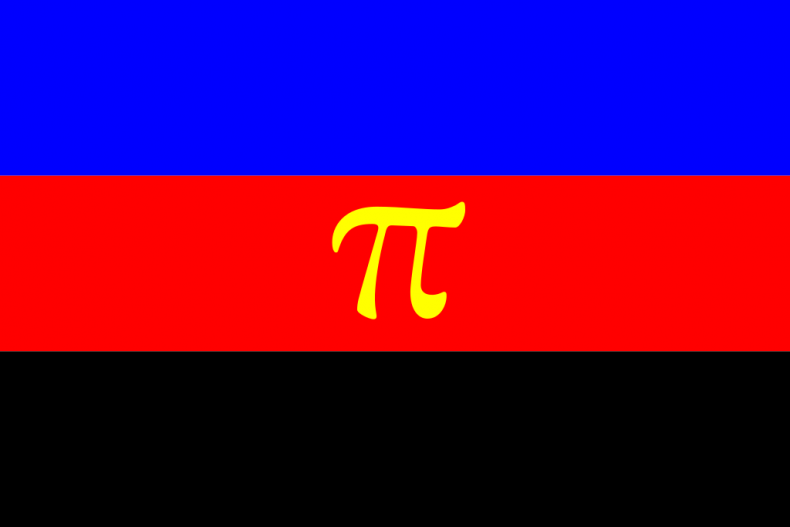
Created by Jim Evans in 1995, the polyamorous flag features four colors and the Greek lowercase letter "pi," which represents the first letter of the world "polyamory."
The blue symbolizes "openness and honesty of all parties involved in the relationships," while the red denotes love and passion.
Black represents "solidarity with those who must hide their polyamorous relationships from the outside world," while gold marks "the value that placed on the emotional attachment to others, whether platonic or romantic," the University of California, Santa Barbara explains.
Aromantic flag

The aromantic (often shortened to aro) refers to a person who "does not experience romantic attraction. Romantic attraction is defined as the desire to be in a romantic relationship and/or do romantic acts with a specific person," the Old Dominion University website says.
The aromantic flag features five stripes, with the "dark green and light green representing aro-spec identifies, white representing friendship, and grey and black representing the spectrum of sexual identifies in the aromantic community," the website adds.
Demisexual flag
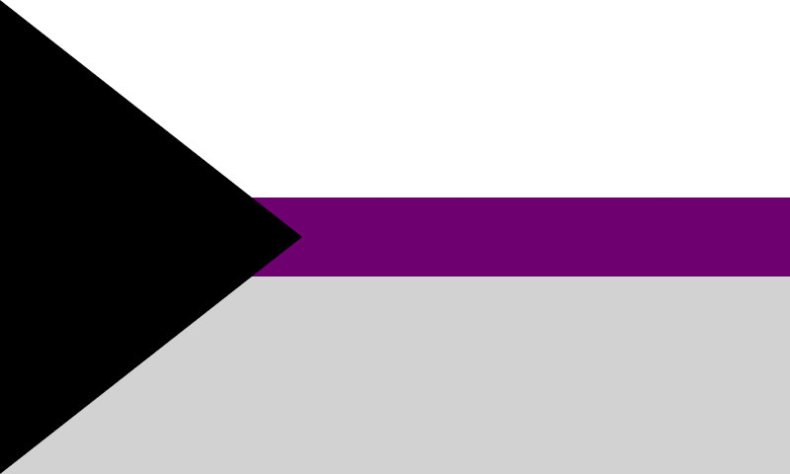
The Old Dominion University website explains: "A demisexual person does not experience sexual attraction until they have formed a strong emotional connection with a prospective partner. The definition of 'emotional bond' varies from person to person.
In the demisexual flag, "the black chevron represents asexuality, gray represents gray asexuality and demisexuality, white represents sexuality, and purple represents community," the website says.

